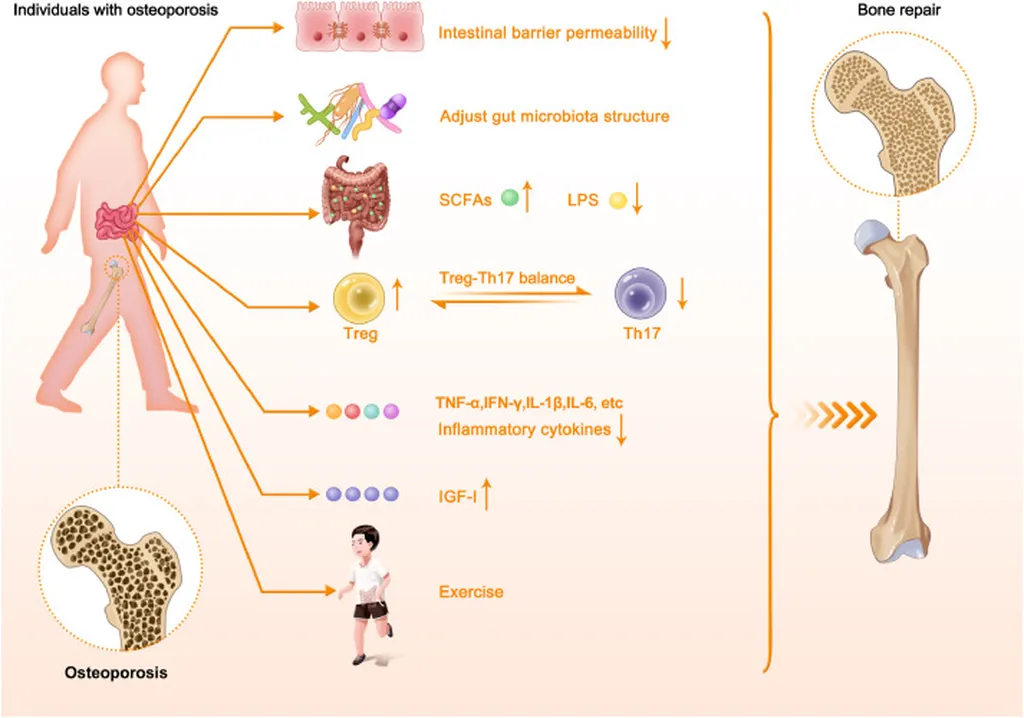In a groundbreaking study published in the journal *Bioactive Materials* (translated from Chinese as “活性材料”), researchers have uncovered a promising new avenue for tackling osteoporosis, a condition that affects millions worldwide and is particularly prevalent among aging populations. The study, led by Bo Tian from the Department of Orthopedics at The Second Affiliated Hospital of Soochow University in Suzhou, China, sheds light on the intricate relationship between gut microbiota and bone health, offering a novel approach to osteoporosis therapy.
The research team observed that osteoporosis in mice was associated with significantly decreased levels of microbial metabolites, particularly tryptophan derivatives. Tryptophan, an essential amino acid, plays a crucial role in maintaining the integrity of the intestinal barrier. When tryptophan levels are depleted, the intestinal barrier becomes compromised, leading to inflammatory responses in the gut and, consequently, bone loss and osteoporosis.
“This study highlights the critical role of gut microbiota in maintaining bone health,” said lead author Bo Tian. “By targeting the gut-organ axis, we can potentially develop more effective therapies for osteoporosis.”
The researchers found that supplementing tryptophan-producing bacteria effectively repaired damaged intestinal barriers in colitis mice and mitigated bone loss. This approach not only addresses the symptoms of osteoporosis but also targets the underlying cause, offering a more holistic treatment strategy.
The implications of this research extend beyond osteoporosis therapy. As the global population ages, the prevalence of osteoporosis is expected to rise, placing a significant burden on healthcare systems and economies. This study provides a potential therapeutic avenue for combating age-related osteoporosis, which could have far-reaching commercial impacts.
“Our findings suggest that synthetic biology-based strategies targeting gut tryptophan could revolutionize osteoporosis therapy,” Tian added. “This approach could lead to the development of new probiotics and other interventions that improve bone health and quality of life for millions of people.”
The study also indicates a link between chronic colitis and osteoporosis, suggesting that treating gut inflammation could have beneficial effects on bone health. This interdisciplinary approach could pave the way for innovative treatments that address multiple health conditions simultaneously.
As the field of synthetic biology continues to advance, the potential applications of this research are vast. Future developments could include the creation of tailored probiotics that specifically target tryptophan production, as well as the development of diagnostic tools that assess gut microbiota composition to predict and prevent osteoporosis.
In conclusion, this study offers a promising new direction for osteoporosis therapy, highlighting the importance of the gut-organ axis in maintaining bone health. By targeting gut microbiota, researchers may unlock new treatments that improve the lives of millions of people affected by osteoporosis and other related conditions. The publication of this research in *Bioactive Materials* underscores its significance and potential impact on the field of regenerative medicine and beyond.

